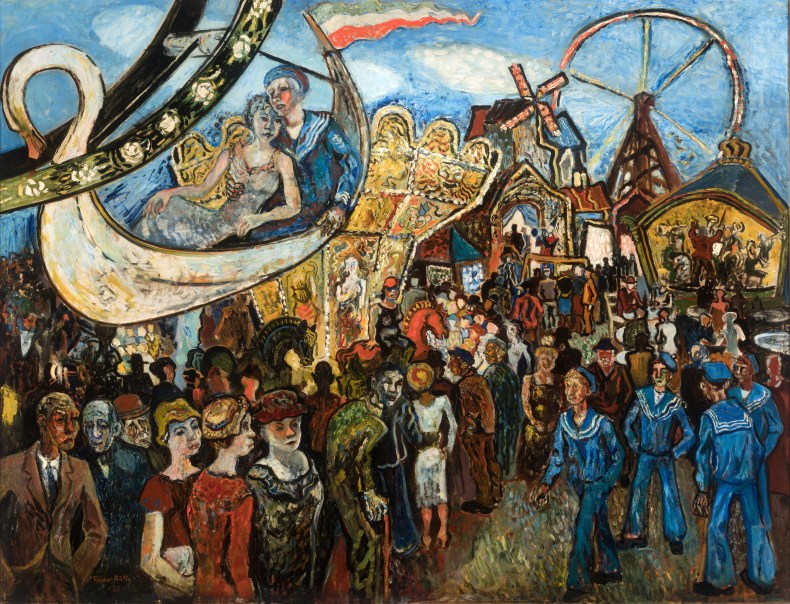There were many who scoffed when, as France was first coming to terms with the fire that ravaged the cathedral of Notre-Dame in April 2018, Emmanuel Macron promised that it would be rebuilt to be ‘more beautiful than before’ within five years – in time for the Paris Olympics. The French president did overshoot – but not by all that much. Last month, it was announced that the cathedral would be reopening to the public on 8 December 2024. The neo-Gothic spire designed by Eugène Viollet-le-Duc has been rebuilt as an exact replica, and is now almost in place. Restoration efforts are expected to continue until 2028, to the tune of some €846m – but even a partial reopening is sure to bring a feeling of renewal to one of the world’s great sites of pilgrimage, both religious and cultural. The creation of a Notre-Dame museum, covering the history of the cathedral from its construction in the 13th century to the present, has been announced, though the French culture ministry has yet to confirm a time-frame for its opening.
Craftspeople on a balcony at the Notre-Dame Cathedral, Paris. Photo: Chris Jackson. Getty Images

In New York, the coming year will bring another return to the status quo. The Frick Collection made a virtue of necessity when it decamped to Madison Avenue and set out the extensive Old Master and decorative collections of its founder, Henry Clay Frick, across three floors of Marcel Breuer’s 1960s modernist ode to concrete – built as the first home of the Whitney Museum. But the move was only ever meant to be temporary, and late in 2024, the Manhattan mansion designed for Frick by Carrère and Hastings in 1914 is reopening after its first comprehensive renovation since 1935, led by a partnership of Selldorf Architects and Beyer Blinder Belle. The second floor will be newly open to the public, with a dedicated space on the first floor for temporary exhibitions; there will be a new cafe, auditorium and ‘state-of-the-art spaces’ for education and research. For many visitors, whether this is a joyful homecoming will depend on how far the museum has been able to preserve the intimate character of one of the world’s great house museums while also realising the upgrades necessary for 21st-century standards of accessibility – but if the Frick Madison interlude is anything to go by, the museum has shown that it is able to balance competing demands with sensitivity and imagination.
The museum landscape in Scotland is changing this year, with two major regional projects coming to fruition. The new Perth Museum is opening in the spring after a £27m redevelopment of the former city hall by Mecanoo architects; it has secured some major loans to help relate the history of the Tayside city sometimes called Scotland’s first capital on account of Scone Abbey, where kings were crowned on the Stone of Scone. Chief among these loans is the Stone itself, which returns to Perth for the first time since it was seized by troops serving King Edward I of England in 1296, while Bonnie Prince Charlie’s broadsword, which was forged in Perth in 1739, makes its long-awaited return to the city; it’s one of a number of Jacobite treasures that will form a prominent part of the displays. East of Glasgow, the Paisley Museum is reopening after a £45m facelift, supported by local and national government as well as lottery funding, that likewise promises to provide locals and visitors alike with new ways of understanding the town’s significance within the broader history of Scotland and the world – not least as a global hub for textile manufacturing, home of the famous Paisley pattern.
Elsewhere, the Natural History Museum of Los Angeles County is opening its $75m expansion, designed by Frederick Fisher and Partners; a wing known as NHM Commons will provide Angelenos with new community spaces, while extensive landscaping renovations and a new entry pavilion will allow visitors more freely to move between the museum and its setting in Exposition Park. Meanwhile, in Norway – following in short order the opening of the gargantuan Munch Museum and the revamp of the Nasjonalmuseet – the Kunstsilo opens in a whopping former grain silo on the coast of Kristiansand on 11 May. Its collection is an amalgam of three – the Southern Norway Art Museum, the Christianssands Picture Gallery and, perhaps most importantly, the Tangen Collection, which comprises some 5,500 modernist works by Nordic artists. The world’s largest private collection of its kind, it has never been on public view in one building before now.
Tivoli (1935), Reidar Aulie. Kunstsilo

The Museum of Homelessness has been an itinerant affair since it was founded by Jess and Matt Turtle in 2014, working on projects with larger institutions ranging from the Tate to the Bureau of Investigate Journalism – but this year, it will settle into its first fixed abode. It will be located at Manor House Lodge near Finsbury Park in London; from it, the museum will continue to work with homeless communities to tell their stories through exhibitions, performances and workshops.
Lastly, the Grand Egyptian Museum in Giza continues to inch towards completion. The Egyptian minister of tourism, Ahmed Issa, suggested that a soft opening might happen in February, subject to working out the ticketing system, with a full opening of this billion-dollar, 81,000-square-metre ode to all things Egyptian now scheduled for May – 12 years after the original opening date in 2012. According to Issa, the Tutankhamun Halls – containing more than 5,000 objects unearthed from the pharaoh’s tomb – are now completely finished. Say it quietly, but it looks like this might finally be the year.

